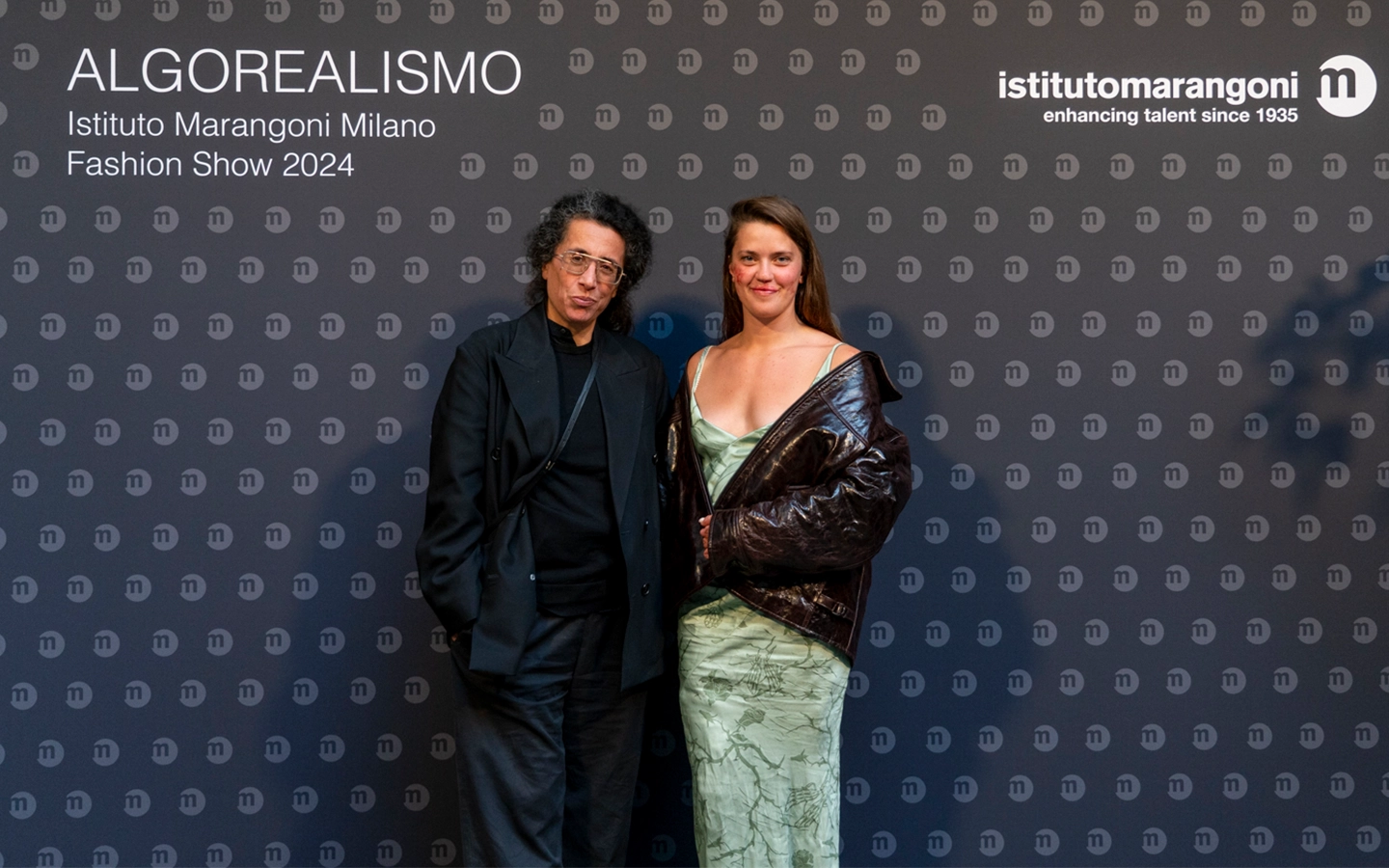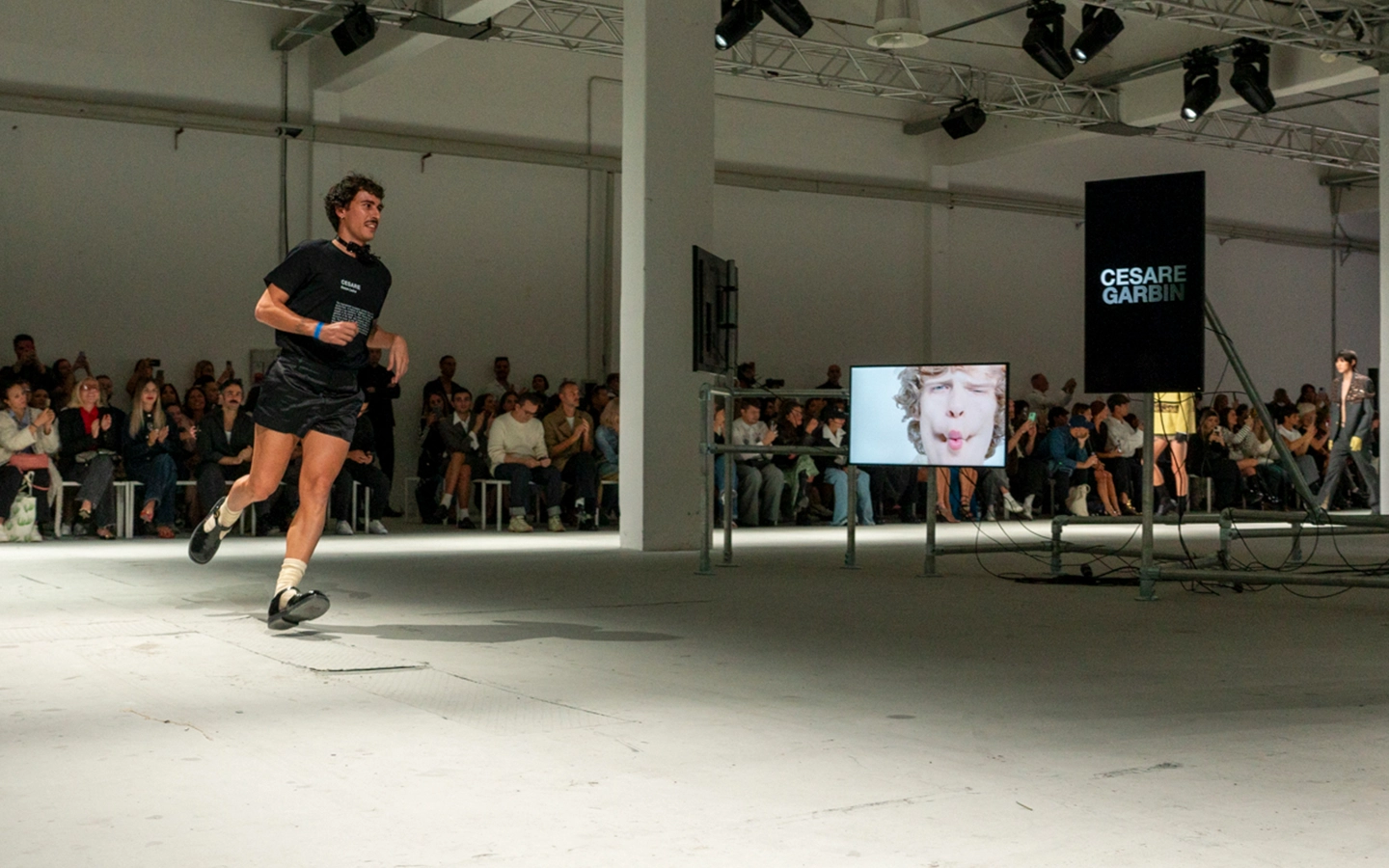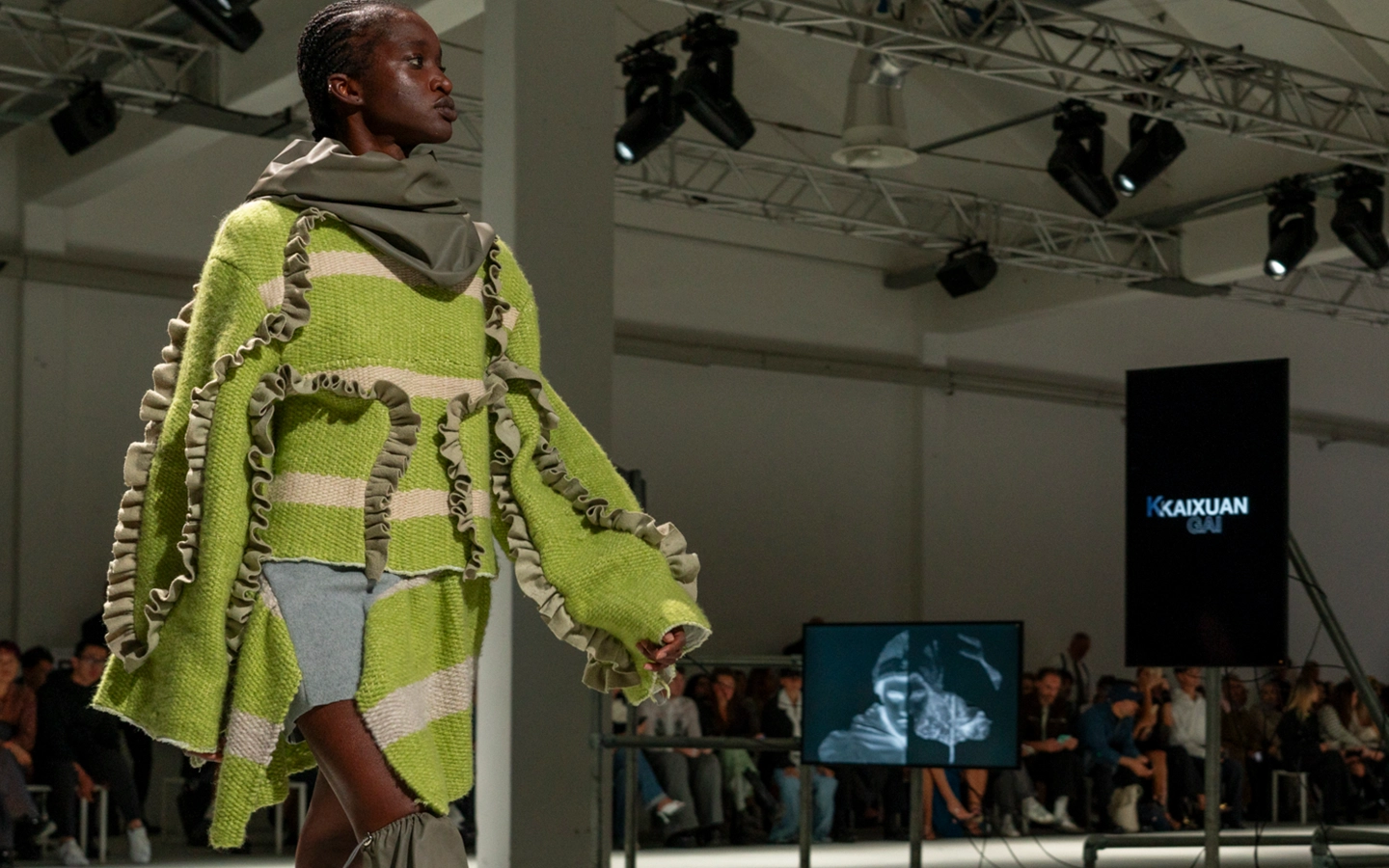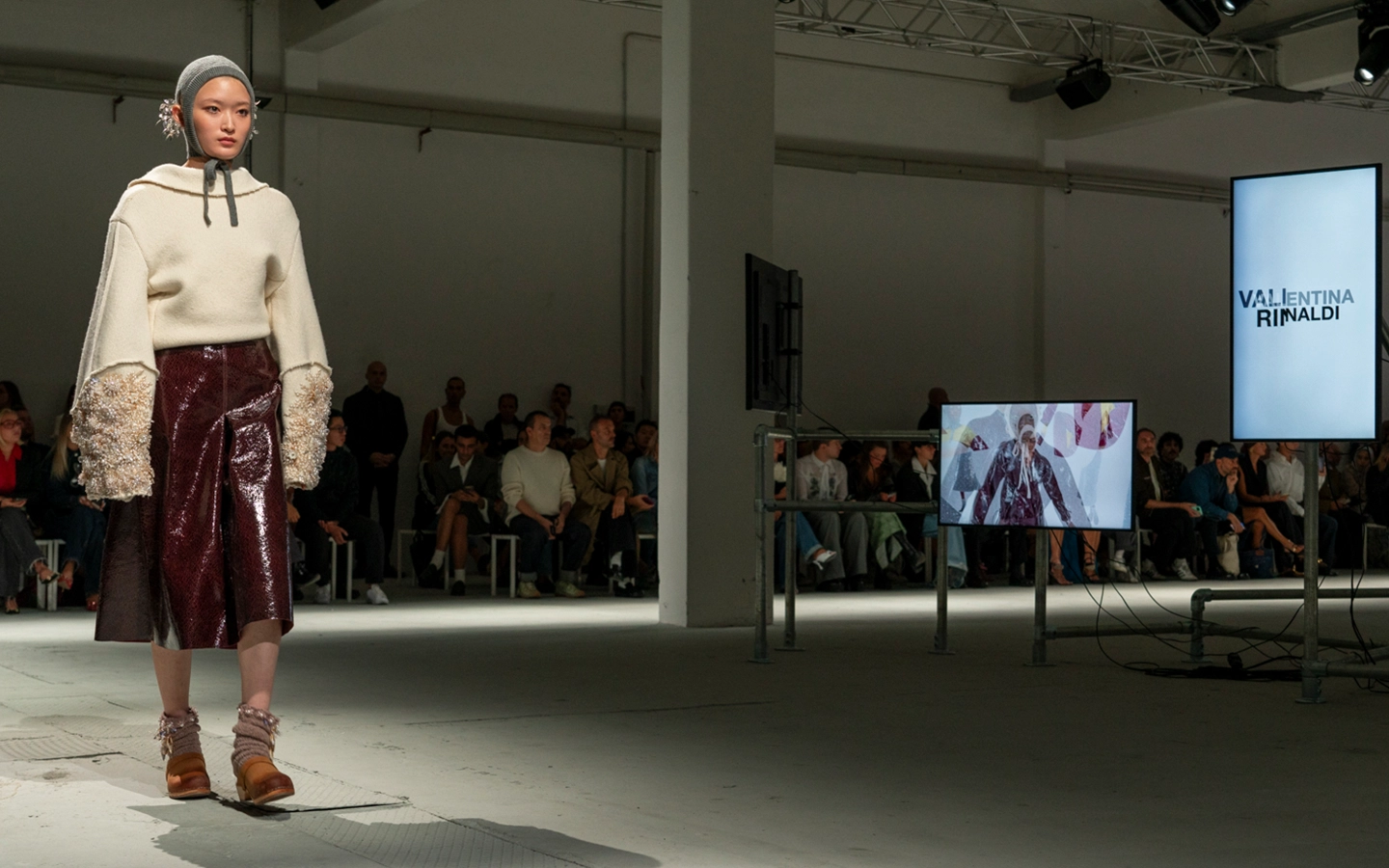


Ten graduate designers addressed post-digital challenges, with hyper-connectivity blurring the boundaries between human and artificial realities
Milano Fashion Week has brought with it a fresh wave of talent. While the fashion world remains divided over whether to celebrate the extra day on the calendar or lament Giorgio Armani’s temporary farewell to the city, we have a better question: what about the rising stars entering the industry?
On September 16, the Algorealismo graduate fashion show took place at Tenoha, spotlighting the top ten emerging talents from Istituto Marangoni: Nadia Alecu, Marco Berardi, Renato Caggiano, Gai Kaixuan, Cesare Garbin, Gabriele Mascolo, Christian Piersimoni, Valentina Rinaldi, Yige Wang, and Jack Zhan Peian.
These graduate designers—selected by a jury of industry experts, including Sara Sozzani Maino, Creative Director of Fondazione Sozzani, Alessio Cuozzo, Head of Buying & Merchandising at Modes, Luca Rizzi, Tutoring & Consulting Director at Pitti Immagine, Edward Cromack, Vice President Design Womenswear at Versace, and Antonio Moscogiuri, Editor-in-Chief of Cap74024—presented an entirely new concept on the runway. Their designs went beyond traditional cutting and sewing, exploring the interplay between the physical and virtual realms. Their creations mirrored the complexities of our post-digital era—a simulated reality of hyper-connectivity, blurring the lines between the human and the artificial.

Sara Sozzani Maino (Creative Director of Fondazione Sozzani) and Veronica Plebani (Paralympic Athlete) attending the Algorealismo Fashion Show
An Algorithm-Shaped, Digitally-Informed World on the Physical Runway
Set in a raw, concrete environment transformed into an immersive meta-world, the show opened with a sense of unease mixed with intrigue. The garments didn’t seek to enhance the human form; instead, they fragmented and multiplied it. The young designers used technical fabrics—translucent, mirrored, and metallic—to interpret the concept of the “double real,” a concept that reflects on the dematerialisation of physical life in an age governed by algorithms. Each collection served as a conduit for a post-digital vision in which reality is shattered, reproduced, and filtered through the omnipresent lens of technology.
Cesare Garbin, awarded “Designer of the Year 2024” at Istituto Marangoni Milano for his collection “Gazze Ladre,” explored these themes through garments featuring reflective surfaces that distorted the body, creating light and shadow effects reminiscent of a constantly shifting digital screen. His use of mirrors and transparency played with the instability of visual perception, forcing the viewer to question what they were truly seeing.

Cesare Garbin, awarded “Designer of the Year 2024” at Istituto Marangoni Milano for his collection “Gazze Ladre”
Renato Caggiano and Gai Kaixuan went further, presenting designs that seemed to emerge directly from a digital simulacrum. Fluid lines and exaggerated volumes evoked shapes that blended into the haze of pixels and data, reflecting a world that is increasingly dominated by virtual spaces.

Gai Kaixuan's collection "Escape the City", inspired by nature and freedom, with soft silhouettes and romantic tones
Valentina Rinaldi, on the other hand, focused on creating an intimate relationship with the human body by using fabrics that acted like a second, digital skin. Technological details hidden within the folds of her garments hinted at a close bond between the wearer and the surrounding technological environment without overshadowing the body’s essence.

Valentina Rinaldi's collection "From the box of memories", a celebration of family, with garments enriched by symbols of rebirth and transformation
Fashion in the Age of Screens
The show cleverly played with the concept of the “screen” as a metaphor for modern life. Nadia Alecu showcased clean, minimal silhouettes enhanced by digital prints that shifted colour depending on the light—a nod to the ever-changing images we experience online, constantly filtered and altered by algorithms that dictate what we see and how we see it.

Nadia Alecu's collection "Anygmatic", a journey through time celebrating individuality, inspired by the aesthetics of 1920s films, it mixes historical allusions and 3D printed sculptures
In response to the central question raised within the show—how do we represent the human body in an era where digital technology has reshaped its contours?—the up-and-coming designers of Algorealism offered diverse answers. In their vision, the body is no longer static; it can be duplicated, transported, and fragmented across infinite worlds, all through a screen. This idea resonated strongly in the work of Gabriele Mascolo, whose deconstructed drapery and oversized capes appeared to alter the human form as if it had been “hacked” by algorithmic aesthetics.
A celebration of fresh, independent creativity, Algorealismo pushed the boundaries of fashion, prompting us to rethink its future. No longer confined to the physical realm, fashion must now explore new, hybrid, immaterial territories, much like the lives we lead through screens and data.
Agnese Pasquinelli
Master student, Milano
Don't miss other looks from the runway. Check out the gallery below!




